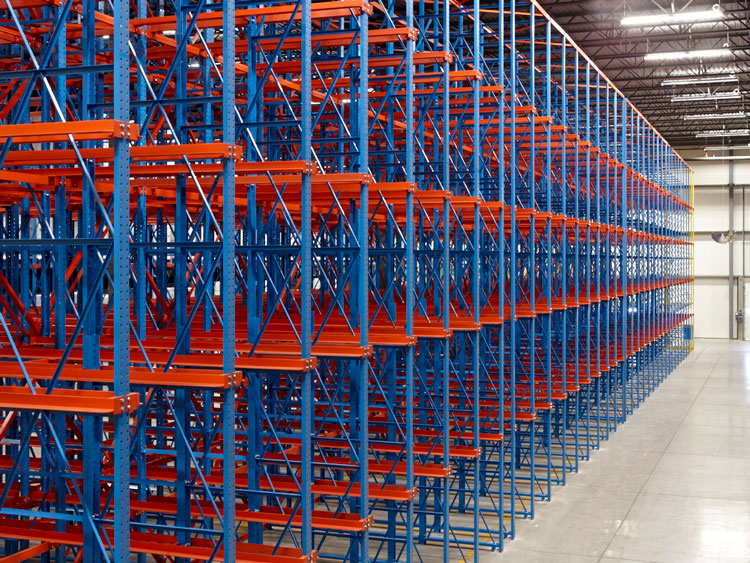Maximizing economic benefits through the use of drive in racks
Drive in racking, also known as drive through racking, is generally designed for the needs of large storage capacity but few types of goods. It adopts a high-density aisle three-dimensional storage structure and is used in conjunction with forklifts to directly drive goods into the aisle for storage. On each aisle of the drive in racking, forklifts directly drive pallet goods in the depth direction and store them in a vertical order, forming an overall storage effect and high warehouse utilization.
Drive in racks are also one of the most commonly used racks for dense storage. In the same space, it has almost twice the storage capacity of a typical pallet rack because the aisle between each row of racks is eliminated and the racks are merged together, allowing goods on the same floor and column to be connected to each other, maximizing storage capacity utilization. Compared with pallet racks, the warehouse utilization rate can reach about 80%, and the warehouse utilization space rate can be increased by more than 30%. It is widely used in wholesale, cold storage, food, tobacco industries, etc.
Drive in racking has been adopted by many large enterprises, which shows that drive in racking has brought high economic benefits to enterprises.
What are the precautions to take when operating a forklift in a storage rack?
Due to the inherent characteristics of the drive in racking system, forklifts need to operate in the racking aisle. The requirements for forklift operators are relatively high, as follows:
1) Ensure that the width of the forklift’s door frame and body can safely enter and exit the aisle of the racks;
2) Before entering the rack aisle, it is necessary to ensure that the forklift is driven directly in front of the rack aisle to avoid deviation and hitting the racks;
3) Raise the fork to a suitable height above the cow leg support beam, and then enter the rack aisle;
4) Forklift enters the rack corridor to pick up goods;
5) After retrieving the goods, maintain the same height and exit the rack corridor;
6) After exiting the rack aisle, lower the goods and proceed with turnover.
